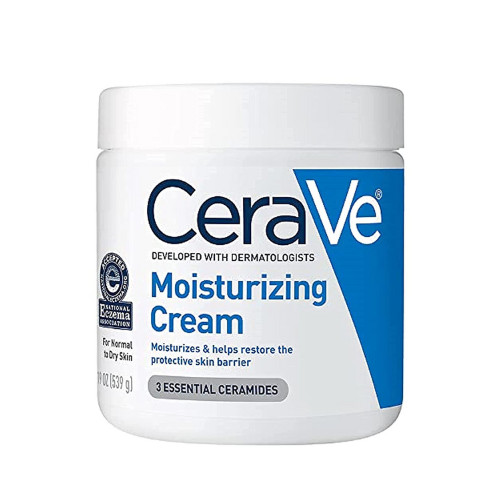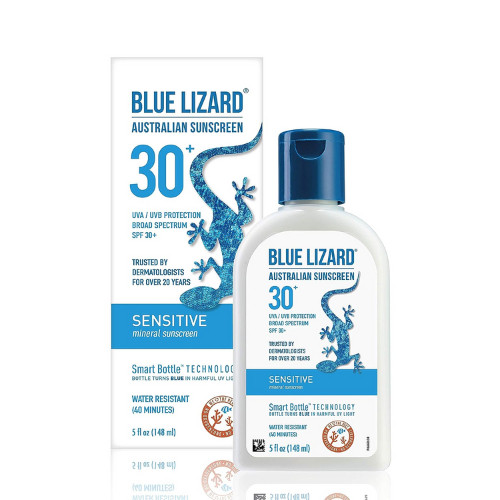Can I Use Cerave Moisturizing Cream On My Tattoo? Absolutely! CeraVe moisturizing cream is a fantastic option for tattoo aftercare, promoting healthy skin and vibrant tattoo artwork, and it helps maintain the integrity of your body art. At tattooat.com, we understand the importance of proper aftercare for tattoo healing and longevity, and CeraVe checks all the boxes for a safe and effective moisturizer with ceramides, which are essential for skin health and tattoo vibrancy. Dive into our guide on optimizing your tattoo healing process for vibrant ink using the right moisturizers!
Table of Contents
- Understanding Tattoo Aftercare
- What Makes CeraVe Moisturizing Cream a Good Choice?
- How to Use CeraVe on Your New Tattoo
- Ingredients in CeraVe and Their Benefits for Tattoos
- Expert Opinions on Tattoo Aftercare
- Other Recommended Products for Tattoo Aftercare
- Common Mistakes to Avoid When Caring for Your Tattoo
- The Importance of Sunscreen for Tattoo Protection
- Maintaining Your Tattoo’s Vibrancy Long-Term
- Frequently Asked Questions (FAQs) About Tattoo Aftercare
1. Understanding Tattoo Aftercare
Tattoo aftercare is crucial for ensuring your new ink heals properly and remains vibrant for years to come. A tattoo involves puncturing the skin with needles to deposit ink, essentially creating an open wound. Proper aftercare minimizes the risk of infection, reduces scarring, and preserves the tattoo’s clarity and color. Neglecting aftercare can lead to complications like:
- Infection: Bacteria can enter through the broken skin, causing redness, swelling, and pain.
- Scarring: Improper healing can result in raised or discolored scars, distorting the tattoo’s design.
- Fading: Poorly moisturized skin can cause the ink to fade prematurely, requiring touch-ups.
Therefore, a consistent and careful aftercare routine is essential for the longevity and appearance of your tattoo, and tattooat.com is here to help guide you through the process.
1.1. The Initial Healing Stage
The first few weeks after getting a tattoo are critical. During this time, your body is actively working to repair the damaged skin. Here’s what to expect:
- Days 1-3: The tattoo will be tender, red, and may ooze a clear or slightly bloody fluid. Keep it clean by gently washing with a mild, fragrance-free soap.
- Days 4-14: The tattoo will begin to scab over. It’s important not to pick or scratch at the scabs, as this can pull out the ink and cause scarring.
- Weeks 3-4: The scabs will start to fall off on their own, revealing new skin underneath. The tattoo may still appear slightly shiny or raised.
1.2. Long-Term Maintenance
Once your tattoo is fully healed, it’s still important to maintain a good skincare routine to keep it looking its best. This includes:
- Moisturizing daily: Keeping your skin hydrated prevents the ink from fading and keeps the tattoo looking sharp.
- Protecting from the sun: UV rays can cause the ink to break down, leading to fading and discoloration. Always apply sunscreen to your tattoo when exposed to the sun.
- Avoiding harsh chemicals: Certain skincare products, like those containing alcohol or strong acids, can irritate the skin and damage the tattoo.
2. What Makes CeraVe Moisturizing Cream a Good Choice?
CeraVe Moisturizing Cream is a popular choice for tattoo aftercare due to its gentle, yet effective formula, aligning perfectly with the tattooat.com commitment to providing safe and reliable aftercare advice. Here’s why it’s a great option:
- Fragrance-Free and Dye-Free: As recommended by tattoo artists and dermatologists, CeraVe is free of fragrances and dyes, which can irritate sensitive, newly tattooed skin.
- Non-Comedogenic: This means it won’t clog pores, reducing the risk of breakouts around your tattoo.
- Contains Ceramides: Ceramides are essential lipids that help restore and maintain the skin’s natural barrier, keeping it hydrated and protected.
- Hyaluronic Acid: This ingredient helps to attract and retain moisture, keeping the skin supple and preventing dryness.
- Gentle Formula: CeraVe is designed for sensitive skin, making it suitable for use on a healing tattoo.
- Affordable and Accessible: CeraVe is widely available at drugstores and online retailers, making it an accessible option for most people.
 CeraVe Moisturizing Cream ingredients
CeraVe Moisturizing Cream ingredients
2.1. The Role of Ceramides in Tattoo Healing
Ceramides are naturally occurring lipids (fats) that are a vital component of the skin’s barrier. They help to:
- Maintain Moisture: Ceramides prevent water loss by creating a protective layer on the skin’s surface.
- Protect Against Irritants: A healthy skin barrier keeps out bacteria, pollutants, and other irritants that can cause inflammation and infection.
- Support Skin Repair: Ceramides aid in the skin’s natural healing process, helping to restore damaged tissue.
By using a moisturizer like CeraVe that contains ceramides, you can help to strengthen your skin’s barrier and promote faster, healthier tattoo healing.
2.2. Hydration is Key
Keeping your tattoo moisturized is essential for preventing dryness, itching, and scabbing. When the skin is properly hydrated, it remains flexible and is less likely to crack or peel, which can disrupt the ink and lead to fading. CeraVe’s combination of ceramides and hyaluronic acid provides long-lasting hydration, keeping your tattoo looking vibrant and healthy.
3. How to Use CeraVe on Your New Tattoo
Using CeraVe Moisturizing Cream correctly can significantly impact the healing process of your tattoo. Here’s a step-by-step guide:
- Wash Your Hands: Before touching your tattoo, always wash your hands thoroughly with soap and water to prevent introducing bacteria.
- Gently Clean the Tattoo: Use a mild, fragrance-free soap (like Dove Sensitive Skin Beauty Bar) to gently wash the tattoo. Rinse with lukewarm water and pat dry with a clean paper towel.
- Apply a Thin Layer of CeraVe: Take a small amount of CeraVe Moisturizing Cream and apply a thin, even layer over the entire tattoo. Avoid using too much, as this can trap moisture and create a breeding ground for bacteria.
- Gently Massage the Cream In: Use your fingertips to gently massage the cream into the skin until it is fully absorbed.
- Repeat as Needed: Reapply CeraVe 2-3 times a day, or whenever the tattoo feels dry or itchy.
3.1. When to Start Using CeraVe
The timing of when to start using CeraVe can depend on your tattoo artist’s specific instructions. However, a general guideline is to begin moisturizing with CeraVe after the initial bandage or protective wrap has been removed, usually within 24-48 hours of getting the tattoo.
3.2. How Much CeraVe to Use
A little CeraVe goes a long way. You only need a thin layer to keep the tattoo moisturized. Applying too much can create a barrier that prevents the skin from breathing, potentially leading to complications.
4. Ingredients in CeraVe and Their Benefits for Tattoos
Understanding the ingredients in CeraVe Moisturizing Cream can help you appreciate its benefits for tattoo aftercare. Here’s a breakdown of the key components:
| Ingredient | Benefit |
|---|---|
| Ceramides | Help to restore and maintain the skin’s natural barrier, preventing moisture loss and protecting against irritants. |
| Hyaluronic Acid | Attracts and retains moisture, keeping the skin hydrated and supple. |
| Glycerin | A humectant that draws moisture from the air into the skin, providing additional hydration. |
| Dimethicone | A silicone-based emollient that helps to create a smooth, protective barrier on the skin. |
| Petrolatum | An occlusive agent that helps to lock in moisture and protect the skin from external factors. |
| Niacinamide | A form of vitamin B3 that can help to reduce redness and inflammation, and improve the skin’s overall tone and texture. |
| Cholesterol | Works with ceramides to help repair the skin’s barrier and maintain its structural integrity. |
| Phytosphingosine | A lipid that helps to reduce inflammation and promote the skin’s natural healing process. |
4.1. Avoiding Irritating Ingredients
One of the reasons CeraVe is so highly recommended for tattoo aftercare is what it doesn’t contain. It’s free of:
- Fragrances: Artificial fragrances are a common cause of skin irritation and allergic reactions.
- Dyes: Dyes can also irritate sensitive skin and potentially interfere with the healing process.
- Parabens: While the research is ongoing, some studies suggest that parabens may disrupt hormone function and cause skin irritation.
- Alcohol: Alcohol can dry out the skin and delay healing.
4.2. Understanding Skin Sensitivity
Everyone’s skin is different, and some people may be more sensitive to certain ingredients than others. If you have a history of skin allergies or sensitivities, it’s always a good idea to do a patch test before applying any new product to your tattoo. To do a patch test:
- Apply a small amount of CeraVe to a small area of skin away from the tattoo (such as on your inner arm).
- Wait 24-48 hours to see if any irritation develops.
- If no irritation occurs, it’s likely safe to use CeraVe on your tattoo.
5. Expert Opinions on Tattoo Aftercare
When it comes to tattoo aftercare, it’s always wise to seek advice from experienced professionals, and tattooat.com ensures to bring you the best experts. Here’s what some experts have to say about using CeraVe and other aftercare practices:
-
Dr. Bruce Katz (Director of JUVA Skin & Laser Center): “Make sure they’re not fragrance-based,” says Katz of tattoo soap and aftercare products more generally, as fragrances are at best unnecessary for tattoo aftercare and at worst harmful because they can cause a reaction in skin that’s already in a fragile state.
-
Luke Zampas (Tattoo Artist): “I always recommend using lotions or soaps that do not contain dyes or fragrance,” he says. “Your tattoo is an open wound and dyes/fragrance can cause irritation and interrupt the healing process.”
-
RK (Tattoo Artist at Atelier Eva): “I always recommend a white, unscented dry skin cream like CeraVe because it’s simple and reliable.”
5.1. The Importance of Following Your Artist’s Instructions
While general guidelines for tattoo aftercare exist, it’s crucial to follow the specific instructions provided by your tattoo artist. They know your skin type, the type of ink used, and the specific techniques they employed, so their advice will be tailored to your unique situation.
5.2. Debunking Tattoo Aftercare Myths
There are many myths and misconceptions surrounding tattoo aftercare. Here are a few common ones:
-
Myth: You should use antibacterial soap to clean your tattoo.
- Fact: Antibacterial soaps can be too harsh and may disrupt the skin’s natural balance. Mild, fragrance-free soap is a better option.
-
Myth: You should let your tattoo air dry.
- Fact: Gently patting the tattoo dry with a clean paper towel is more hygienic than letting it air dry, as this can attract bacteria.
-
Myth: You should apply a thick layer of moisturizer.
- Fact: A thin layer of moisturizer is sufficient. Applying too much can trap moisture and create a breeding ground for bacteria.
6. Other Recommended Products for Tattoo Aftercare
While CeraVe Moisturizing Cream is a great choice for aftercare, here are some other products that can help to promote healing and maintain your tattoo’s vibrancy:
| Product | Benefit |
|---|---|
| Dove Beauty Bar Sensitive Skin | A mild, fragrance-free soap that gently cleanses the skin without causing irritation. |
| A+D Tattoo Ointment | An ointment that creates a protective barrier to keep skin safe from external forces, ideal for the first few days of healing. |
| Neutrogena Norwegian Formula Deep Moisture Body Lotion | An unscented lotion that provides long-lasting hydration, helping to prevent dryness and itching. |
| Blue Lizard Australian Sunscreen Sensitive SPF 30+ | A sunscreen that provides broad-spectrum protection from UVA and UVB rays, essential for preventing fading and discoloration of your tattoo. |
6.1. The Benefits of Using Ointments Initially
In the first few days after getting a tattoo, using an ointment like A+D can be beneficial. Ointments create a thicker, more protective barrier than lotions or creams, helping to shield the tattoo from bacteria and other irritants. However, it’s important to switch to a lighter moisturizer like CeraVe after a few days to avoid trapping too much moisture.
6.2. Choosing the Right Sunscreen
Sunscreen is essential for protecting your tattoo from the harmful effects of UV rays. When choosing a sunscreen, look for the following:
- Broad-spectrum protection: This means it protects against both UVA and UVB rays.
- SPF 30 or higher: SPF 30 blocks 97% of UVB rays, which is sufficient for most people.
- Water-resistant: This is especially important if you’ll be swimming or sweating.
- Fragrance-free: As with other aftercare products, avoid sunscreens that contain fragrances or dyes.
 Sunscreen is important
Sunscreen is important
7. Common Mistakes to Avoid When Caring for Your Tattoo
Even with the best intentions, it’s easy to make mistakes when caring for a new tattoo. Here are some common pitfalls to avoid:
- Picking or Scratching: As mentioned earlier, picking or scratching at the scabs can pull out the ink and cause scarring.
- Over-Moisturizing: Applying too much moisturizer can trap moisture and create a breeding ground for bacteria.
- Using Harsh Soaps or Lotions: Avoid products that contain fragrances, dyes, alcohol, or other irritating ingredients.
- Soaking the Tattoo: Avoid prolonged soaking in water, such as in a bath or swimming pool, as this can interfere with healing.
- Exposing the Tattoo to Direct Sunlight: UV rays can cause the ink to fade and damage the skin.
7.1. The Dangers of Ignoring Aftercare Instructions
Ignoring aftercare instructions can lead to a variety of complications, including:
- Infection: Bacteria can enter the broken skin, causing redness, swelling, pain, and potentially more serious health problems.
- Scarring: Improper healing can result in raised or discolored scars, distorting the tattoo’s design.
- Fading: Poorly moisturized skin can cause the ink to fade prematurely, requiring touch-ups.
- Allergic Reactions: Using products that contain irritating ingredients can trigger allergic reactions, causing itching, redness, and inflammation.
7.2. Recognizing Signs of Infection
It’s important to be vigilant about monitoring your tattoo for signs of infection. If you notice any of the following, consult a doctor or dermatologist:
- Excessive redness or swelling
- Pus or drainage
- Fever
- Increasing pain
- Red streaks radiating from the tattoo
8. The Importance of Sunscreen for Tattoo Protection
The sun is one of the biggest enemies of tattoos. UV rays can cause the ink to break down, leading to fading and discoloration. This is especially true for tattoos with vibrant colors, such as red, yellow, and orange. Therefore, protecting your tattoo from the sun is crucial for maintaining its appearance over time.
8.1. How Sunscreen Works
Sunscreen works by creating a protective barrier on the skin that either absorbs or reflects UV rays. There are two main types of sunscreen:
- Mineral Sunscreens: These contain mineral ingredients like zinc oxide and titanium dioxide, which physically block UV rays.
- Chemical Sunscreens: These contain chemical filters that absorb UV rays and convert them into heat, which is then released from the skin.
Both types of sunscreen can be effective, but mineral sunscreens are generally considered to be gentler and less irritating, making them a good choice for sensitive skin and tattoos.
8.2. When and How to Apply Sunscreen
Sunscreen should be applied liberally to your tattoo whenever it’s exposed to the sun, even on cloudy days. Here are some tips for effective sunscreen use:
- Apply 15-30 minutes before sun exposure: This allows the sunscreen to fully absorb into the skin.
- Reapply every two hours: Or more often if you’re swimming or sweating.
- Use a generous amount: Most people don’t use enough sunscreen. Aim for about one ounce (a shot glass full) to cover your entire body.
- Don’t forget hard-to-reach areas: Ask someone to help you apply sunscreen to your back and other areas you can’t easily reach.
9. Maintaining Your Tattoo’s Vibrancy Long-Term
While proper aftercare is essential in the initial healing phase, maintaining your tattoo’s vibrancy requires ongoing care and attention. Here are some tips for keeping your tattoo looking its best for years to come:
- Moisturize daily: Even after your tattoo is fully healed, continue to moisturize it daily to prevent dryness and fading.
- Protect from the sun: Always apply sunscreen to your tattoo when exposed to the sun.
- Stay hydrated: Drinking plenty of water helps to keep your skin hydrated from the inside out.
- Eat a healthy diet: A diet rich in vitamins and antioxidants can promote healthy skin and overall well-being.
- Avoid harsh chemicals: Be mindful of the skincare products you use and avoid those that contain harsh chemicals or irritants.
9.1. The Role of Lifestyle Factors
Your lifestyle can also impact the appearance of your tattoo. Smoking, excessive alcohol consumption, and a poor diet can all contribute to skin damage and premature aging, which can affect the vibrancy of your tattoo.
9.2. When to Get a Touch-Up
Even with the best care, tattoos can fade over time. Factors like sun exposure, friction from clothing, and the natural aging process can all contribute to fading. If you notice that your tattoo is starting to look dull or faded, consider getting a touch-up from your tattoo artist. A touch-up can restore the tattoo’s original vibrancy and keep it looking fresh for years to come.
10. Frequently Asked Questions (FAQs) About Tattoo Aftercare
Here are some frequently asked questions about tattoo aftercare:
1. Can I use any moisturizer on my tattoo?
It’s best to use a fragrance-free, dye-free, and non-comedogenic moisturizer like CeraVe to minimize the risk of irritation and breakouts.
2. How often should I moisturize my tattoo?
Moisturize your tattoo 2-3 times a day, or whenever it feels dry or itchy.
3. Can I use Vaseline on my tattoo?
Vaseline can be used in the first few days after getting a tattoo to create a protective barrier, but it’s important to switch to a lighter moisturizer like CeraVe after a few days to avoid trapping too much moisture.
4. Can I swim with a new tattoo?
Avoid swimming with a new tattoo until it is fully healed, as this can increase the risk of infection.
5. Can I exercise with a new tattoo?
Avoid strenuous exercise that causes excessive sweating, as sweat can irritate the tattoo.
6. How long does it take for a tattoo to heal?
Tattoos typically take 2-4 weeks to heal, but this can vary depending on the size and location of the tattoo, as well as your individual healing rate.
7. What should I do if my tattoo gets infected?
Consult a doctor or dermatologist immediately if you suspect your tattoo is infected.
8. Can I use a tanning bed with a tattoo?
Avoid using tanning beds, as UV rays can cause the ink to fade and damage the skin.
9. How can I prevent my tattoo from fading?
Protect your tattoo from the sun by applying sunscreen regularly and avoid harsh chemicals and skincare products.
10. Is it normal for my tattoo to itch during healing?
Yes, it’s normal for tattoos to itch during the healing process. However, avoid scratching, as this can damage the skin and cause scarring.
At tattooat.com, we’re dedicated to providing you with the most up-to-date information and expert advice on all things tattoo-related. Whether you’re looking for inspiration for your next design, searching for a talented artist, or seeking guidance on aftercare, we’re here to help you on your tattoo journey. Remember, a well-cared-for tattoo is a beautiful and lasting expression of your individuality.
Are you ready to explore a world of stunning tattoo designs, connect with talented artists, and learn everything you need to know about tattoo care? Visit tattooat.com today and discover the ultimate resource for tattoo enthusiasts in the USA!
Address: 1825 SW Broadway, Portland, OR 97201, United States
Phone: +1 (503) 725-3000
Website: tattooat.com

